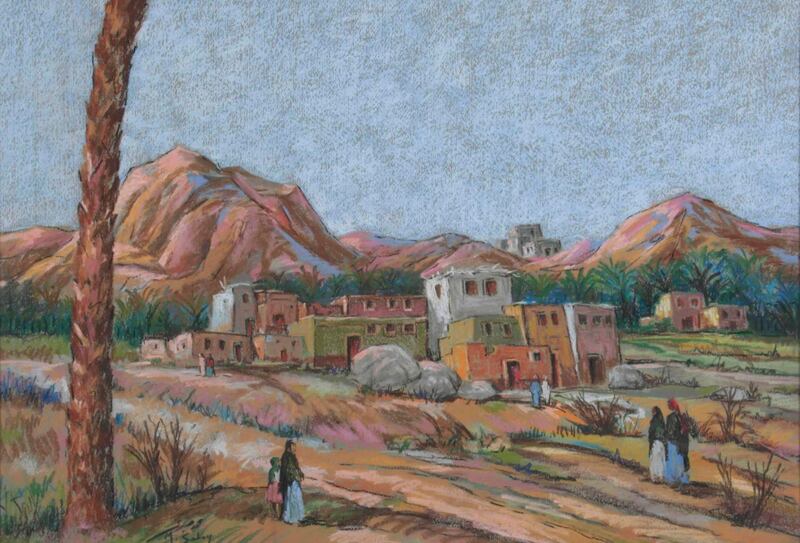Egyptian artist Mohamed Sabry has died at the age of 100. Born in 1917 in Cairo, his oil paintings chronicled the landscape of his native country and the Maghreb region, as well as political events of his time. Two of his most famous paintings, executed in oil, show Gamal Abdel Nasser addressing the UN in 1961 and signing the Cairo treaty, surrounded by Arab heads of states, in 1970.
He also painted landscapes of the Maghreb: Old Cairo, Morocco, the Nile, as well as Islamic sites of Andalusia. These paintings were renowned for their use of colour: tawny yellows and greens alongside rich pinks and blues. They consistently evoke a feeling of peace and calm, from boats floating on the Upper Nile to figures circulating in old markets.
Sabry graduated from the Faculty of Arts in Cairo in the mid-1930s. He spent much of his life in Spain; he studied at the Royal Academy in San Fernando in Madrid, and became a professor there in 1952. He also worked for a time as well as assistant director of Madrid’s Egyptian Institute of Islamic Studies. In 1988, he was awarded the Queen Isabel medal for his contributions to Spanish culture.
His work is held by the National Museum of Modern Art in Cairo, the Museum of Fine Arts in Valencia, and the Barjeel Art Foundation in Sharjah, among others.






